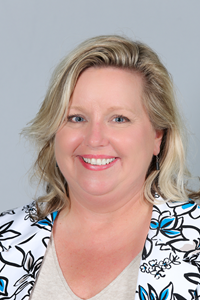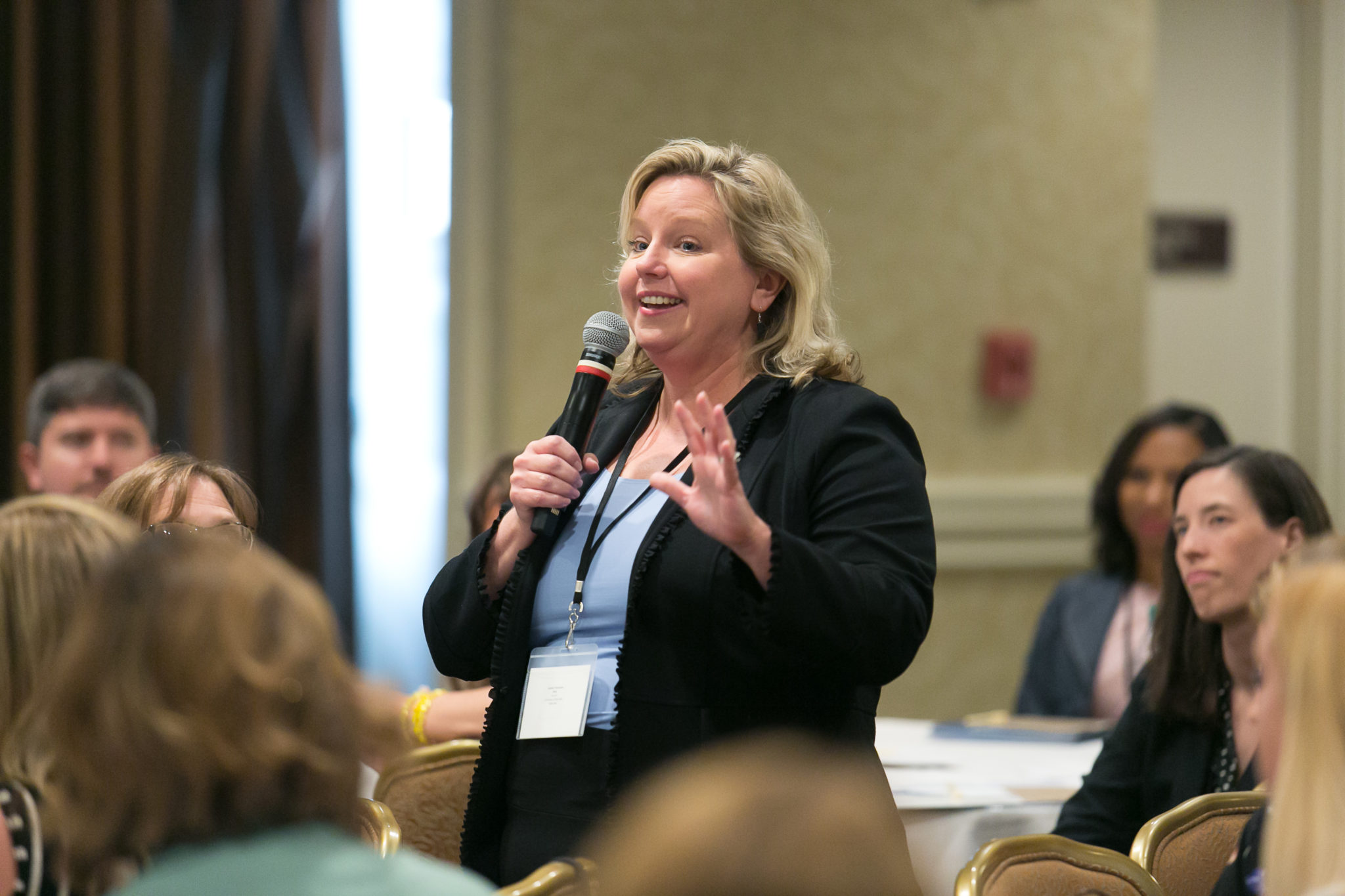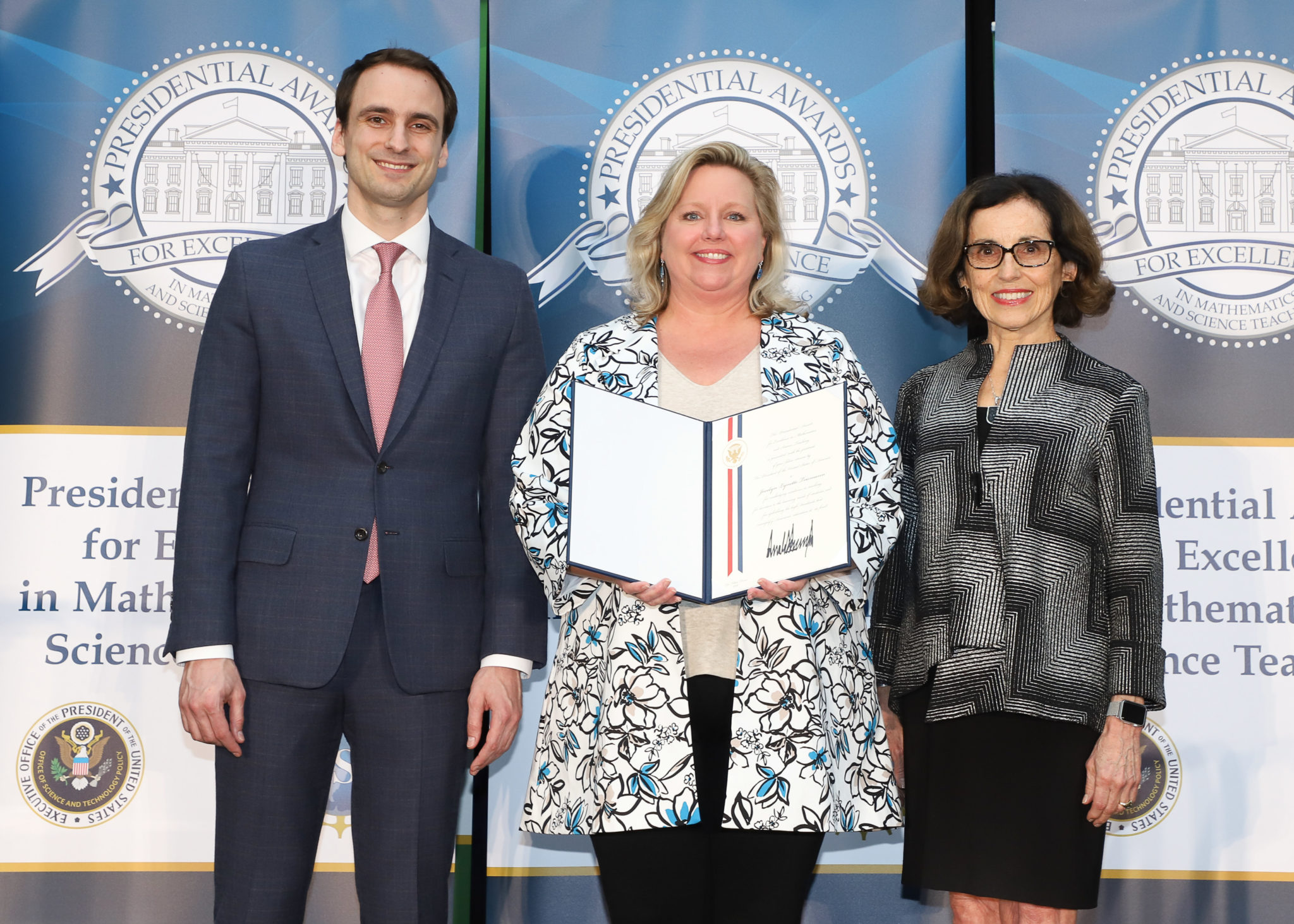| Editor’s note: |
| Applications for middle/high school teachers are now open for the 2019 Presidential Awards for Excellence in Mathematics and Science Teaching. To be considered, nominate a teacher at your school by March 1, 2019. Selected nominees will then have until May 1, 2019 to apply. |
In 2018, two Ohio teachers won Presidential Awards for Excellence in Mathematics and Science Teaching (PAEMST). The awards — the highest honors bestowed by the U.S. government specifically for K-12 mathematics and science (including computer science) teaching — were given to Wendy Teismann of Wilson Elementary School in Cincinnati’s Forest Hills School District, and to Vicki Willett of Licking Heights West Elementary School in Blacklick. The women, who were nominated for the awards and then submitted lengthy applications, were chosen for developing and implementing a high-quality instructional program that enhances student learning. Each received a certificate signed by the president, a trip to Washington, D.C., for recognition and professional development events and $10,000 from the National Science Foundation. To find out what it takes to win this award, we contacted Wendy Teismann (an interview with Vicki Willett was posted in August):
Q: Tell us about your educational background and your teaching experiences, and give us an overview of your current school and position.
A: I am currently in my 11th year of teaching fourth-, fifth- and sixth-grade mathematics students in a gifted program at Wilson Elementary. My previous 17 years of classroom experiences included kindergarten through fifth grades and a university mathematics course for pre-service teachers.
I’ve taught in Ohio and Mississippi during those 27 years. I am twice National Board Certified and a Level 2 Google Certified Educator.

and Science Teaching
Q: What prompted you to apply for the PAEMST, and what was involved in the application process?
A: A student and her family nominated me for this award. It is such an honor that my students set high expectations for teachers. We strive for excellence together.
The application process involved reflecting on your teaching, which resulted in an 11-page narrative, videotaped lessons, letters of recommendations and professional resume.
A: In your application for the award, what do you think caught the eye of the judges?
A: My experiences show that I am a teacher who continues to make learning engaging for students through multiple pathways. I am willing to keep learning myself to find ideas that help my students stretch their thinking. I listen to my students’ reasoning about an open-ended problem, help them make connections and celebrate the collaborative, and often messy, process of learning.
Also, I think the judges value contributions beyond the classroom such as examples of leading committees, building teams, mentoring, participating in professional organizations and pursuing other ways that support best practices in education.
Q: Tell us about your specific teaching strategies and any resources you use to sharpen your instructional approach.
A: I am dedicated to student-focused enriched learning that keeps students asking questions through solving authentic and complex problems. Students incorporate their aspirations to personalize learning, collaborate to understand why mathematics works and infuse their creativity into their projects.
I like to include innovative pathways such as using Green Screen for students to strengthen their communication, reasoning and reflection.
Q: As a teacher, what have you learned from your students?
A: Students’ curiosity is contagious! I’ve learned to keep that child-centered “wonder” about ideas. I want learning to be genuine.
Students have taught me to value the numerous ways we are alike and different. Diversity in thought and perspective is a great leverage for learning.
Q: What keeps you engaged in teaching, and what have been the biggest challenges and greatest satisfactions you have experienced?

A: The impact of making a difference in students’ lives is a very satisfying aspect of teaching that makes you stick with it. When students return to tell you about how you positively influenced them, it makes all the effort worthwhile.
I like hearing that math was fun in my classroom because it means that I’ve helped students avoid math anxiety.
It can be very challenging to balance the expectations of performance on state tests with authentic learning.
Q: Did you have a special teacher or mentor who inspired you? What advice would you pass along to other teachers?
A: The teachers I remember most are the ones who cared enough to get to know the real me. They learned what made me special, they connected with me and encouraged me. I strive to do the same for my students by creating a learning environment that reflects their personalities.
My advice to other teachers would be to nurture learning opportunities that make students feel like they have to go tell someone about it. I don’t want students going home saying nothing interesting happened at school. I want them to have meaningful experiences to discuss.
Q: Do you have a message for principals and administrators on how to support excellence in math and science teaching?
A: STEM is more than a box on the shelf. It is a way of thinking about science, technology, engineering and math. Allow teachers autonomy in creating STEM experiences for students, and support them with choice in professional development.
Q: What does winning the PAEMST mean to you?
A: The Presidential Award affirms a dedication to creating meaningful learning experiences that make a difference in students’ lives. Collaboration with many phenomenal colleagues, curious students and supportive parents has inspired me to seek innovative ideas in education.
This distinguished award celebrates reflection and action to motivate students to be amazing individuals passionate about learning.

Q: Finally, what will you do with the $10,000 award?
A: After I set aside money for the taxes, I would like to use some to fund a project in my classroom, some for home improvements and some for a family trip.